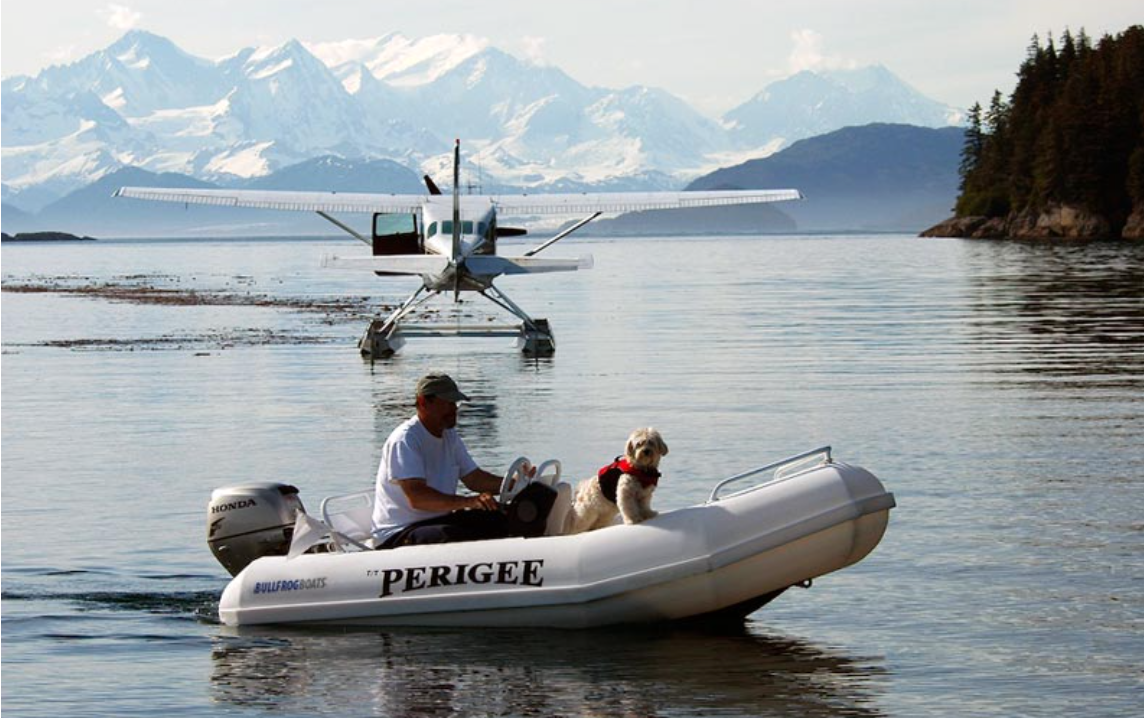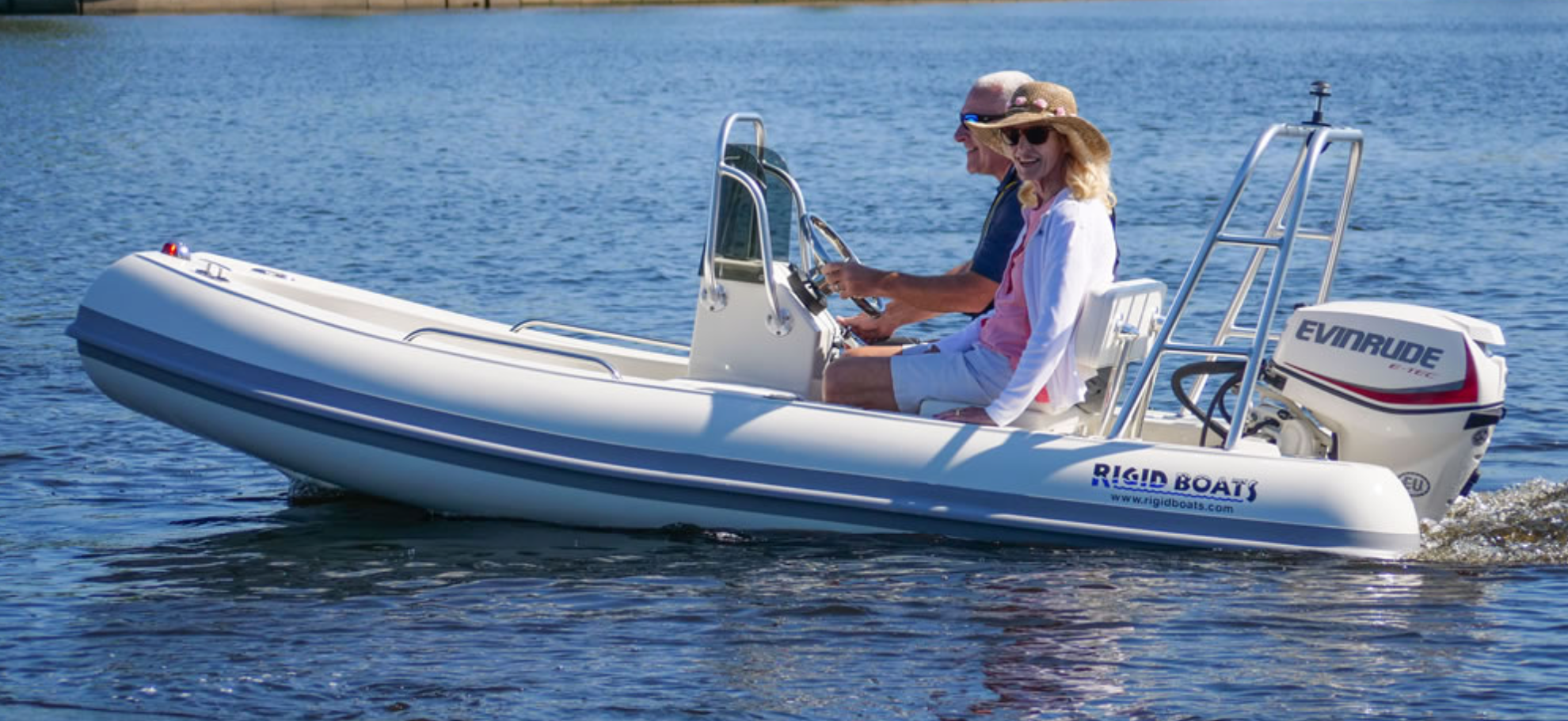How to Find the Right Dinghy

Choosing a dinghy that best suits a couple’s or family’s cruising lifestyle is vital. Complicating the choice is the reality that there is no objectively best dinghy, rather innumerable options purpose-built for different needs. From a no-expenses-spared custom tender for a large yacht to a kayak lashed to the deck of a small sailboat, the perfect match between a boat, captain and dinghy is a subjective decision at best.
The bottom line is that being particular is important. If an owner buys a sailboat and plans to live aboard, he may find that a 10’ (3.05 m) inflatable a bit much for one to handle solo, especially with the generous freeboard of many sailboats. If said owner wants to use an outboard on the dinghy, it needs to have a hard transom. Following are some recommendations for choosing the right dinghy.
Clear-Eyed Self Reflection
Before you charge into the nearest dinghy store and become overwhelmed, think about what you want to do and what you can do. What kind of platform is your boat? If you’ve got high freeboard and a bad back, think twice about a setup that involves heavy lifting. Does this mean you go more minimalist, or do you go with a bigger davit system? What kind of seas do you regularly take on? Seaworthiness, always important in a tender, can be extra vital for those who cruise in areas that can get rough.

Essential Considerations
In-Water Performance
If you are an avid sailor and/or paddler and are considering a non-motorized dinghy route, you must admit that you are an eccentric idealist.
While a tenable position, the truth is that you have multiplied the factors you must consider but you’ve also reduced what you must purchase, like bringing down the cost considerably. If you plan to cruise extensively, trips to shore will involve paddling against the current or sailing upwind, even if all you need is a bag of ice for your old fashioned.
You will also probably want something that can move a decent amount of cargo and the occasional passenger at least. For that there are many inflatables offered that do not have a built-in hard transom for a mounted outboard. Pros including easy stowage and paddles that disassemble.

If you insist on using a kayak or a paddleboard as your primary tender, do yourself a favor and get a touring model. Although inept as a cargo/passenger mule, they at least have decent seakeeping ability. An inflatable kayak or paddleboard, like the Airis line from Walker Bay is probably minimalist incarnate. For pure rowing ability, a fiberglass (or even wooden) dinghy is usually more efficient than an inflatable one.
Shore Mule (Motorized)
It is safe to say that most dinghies fall into this category. This category’s job is to get maximum people and cargo to and from shore, thanks to a trusty low-horsepower outboard motor and some maneuvering with a pair of oars.
Choices available in this group can get staggering. Take Walker Bay’s Odyssey series, for example. They are inflatable, including the floor. They are rated for 4.5 to 8 hp from single short-shaft outboard engines. While you may be able to get dinghies like this on a plane, that’s not their primary purpose. These are the tenders for owners of boats in the 25’ to 40’ (7.62 m to 12.19 m) range. They are the putt-putts of the dinghy world and when paired with a trusty four-stroke outboard, they generally enjoy long lives with low maintenance. They are easily towed or can be hung on a davit system.

However, due to the nature of seakeeping, the generally higher cost and increasing complexity, most hard-bottom dinghies tend to leave the purely “shore mule” category for the glitzier category we’re about to dive into.
Performance Tender (Motorized)
Generally, the terms dinghy and tender are synonymous, although most consider dinghies to be the smaller, simpler variety, while tenders are often seen as proper hard-hulled boats unto themselves. Perhaps dinghies are to boats what tenders are to yachts?
Regardless, the entry level to this world is the rigid-hull inflatable boat (RIB). This popular tender design features a hard bottom with inflatable gunwales. Offering the performance of proper solid hulls with some of the portability and convenience of inflatables, RIBs remain the go-to tender choices for those who can manage them on deck (we’ll come back to that later).
Bullfrog Boats makes tenders with a solid hull built of buoyant polyurethane foam encased within aluminum. Unsinkable in a very literal sense and quite strong, the light construction makes it a bit more manageable on deck.

Prominent in the performance-tender family is the center-console layout. RIBs, Bullfrog Boats and builders of solid-hull aluminum and fiberglass tenders tend to offer traditional tiller-driven outboard and center-console options. Once we get into the center console realm, the category evolves into models that are as capable as comparably sized ski boats or runabouts.
Additionally, there are hard-bottomed tenders that are compatible with sail rig packages so the non-motorized dreamers mentioned before can have their cake and eat it too.
In exchange for the capabilities of a “real boat,” these tenders become the most cumbersome to stow aboard. A larger mothership with some kind of hoist or davit system is required. Some, usually sailors with less deck space for their overall length will resort to towing a solid-hull..
On-Deck Stowability
Modern boaters are not the first to dream of owning a large customized boat that is also easy to stow. The on-deck consideration grounds many decisions made with the on-water goals. Simply put, an aluminum center console may be the dream, but if you’re at the helm of a 20-something-foot Ranger Tug, you’re probably out of luck. By that same token, that inflatable kayak will roll up nicely to stow aboard, but one should be realistic about the conditions such a dinghy can handle.

The Big Buy
Armed with the aforementioned tips, start your search at the bulletin boards of marinas and by talking to other boaters who’ve used the dinghies you’re considering. For example, a certain RIB could look great on paper, but somebody who’s owned one may have useful bits of information regarding the on-deck situation or other performance issues.
Additionally, good dinghies tend to end up as leftovers in garages or boatyards. Those marina bulletin boards can be excellent sources for leads, often for a great price. They can also be good opportunities for first encounters that bring the tender from the product catalogue to life. Facebook marketplace or Craigslist can also bear fruit, but generally the listings on a marina bulletin board are a bit more reliable, personable and bona fide.
In the perfect world, you’d be able to squeeze in a boat show before your big purchase. These events offer in-person exposure to just about everything on the market, with exhibitor experts who are eager to share information and cut a deal. Avoid the impulse purchase but remember those special offers when you collect business cards. If you do end up going with them, the “deal of a lifetime” discount they offered is worth bringing up again.

If you’re open to a variety of inflatables, then you should have plenty of options wherever you go. If you’re after something specific, you may want to visit the manufacturer’s website to locate the nearest dealer. The goal is that once you’re at the store, you’ve got a short list of final candidates and a few specific questions. The journey will be well worth it, because even a low-end dinghy or kayak can put you back thousands of dollars.
If you are going with the high-end custom tender, you best build a great relationship with the company you’re working with. At this point, you could be shelling out tens of thousands and you owe it to yourself to get your money’s worth.
The final thought I offer is that there is a distinct possibility that your well-being will be dependent upon your tender at one point or another during your boating life. A perfect fit between dinghy and skipper is a magical thing, and, unless there is a dog aboard, it’ll be your best friend through the best and worst days on the water.